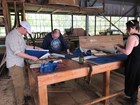Canneries were built in response to the environment. This series is a summary of some of Alaska's canneries and the landscape features that defined where and how they developed. The overall period of significance for canneries in Alaska begins in 1878, when the first two canneries opened, and ends in 1936, when salmon production peaked. While some of these canneries no longer exist, the landscapes continue to tell of the history and importance of that period in the commercial fishing industry.
-
Article 1: Canneries of Alaska
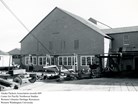
The first commercial fishing operations in Alaska were factories where the catch was salted before being sent to outside markets. These salteries were converted into canneries where fish were processed and canned. Cannery towns began developing along the coasts, hosting the warehouses and processing buildings as well as bunkhouses, mess halls, stores, laundries, hospitals, and jails. Read more
-
San Francisco Maritime National Historical Park
Article 2: Diamond NN Cannery: A Case Study
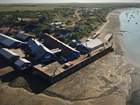
The Alaska Packers Association started the Diamond NN
Cannery after it absorbed a small saltery that was built in 1890 on the southside of the Naknek River, adjacent to a small creek. The cannery continues to operate over a century later, now owned by Trident Seafoods. In 2015, historian and former fish house slimmer Katherine Ringsmuth launched the Cannery History Project to collect, share, and preserve the stories of cannery workers here. Read more -
Article 3: Kake Cannery National Historic Landmark
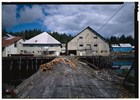
The Kake Cannery was constructed in 1912 and operated until 1940. The site is located on a traditional Tlingit summer fishing ground, and many residents of the nearby village of Kake participated in the construction of the cannery. It initially employed Native Alaskans. By the 1930s, cannery included workers from China, Japan, and the Philippines. Read more
-
Glacier Bay National Park & Preserve
Article 4: Bartlett Cove Canneries

The Bartlett Cove Cannery was located on Lester Island, in what is today Glacier Bay National Park and Preserve. The cannery/saltery sites are a part of the Bartlett Cove cultural landscape. A severe earthquake in 1899 weakened the glaciers at the head of Glacier Bay. In the following weeks, icebergs as big as buildings drifted south to the mouth of the bay, yet salting operations continued at Bartlett Cove until 1900. Read more
-
Article 5: Dundas Bay Cannery
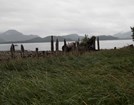
In 1900, the Western Fisheries Company of Portland, Oregon built a cannery in a small cove on the western shore of Dundas Bay. Reportedly, the company paid a fee to the head of the T'akdeintaan clan for the use of the land upon which the cannery was built, as well as for the fish in Dundas Bay. Clan members continued to fish in the Dundas River, but sold the fish to the cannery. The cannery employed Alaskan Natives as fishermen and cannery workers. Read more
-
Katmai National Park & Preserve
Article 6: Kukak Bay Cannery

The Kukak Bay Cannery ruins are located in a glacially carved fjord. The historical archeological district in Katmai National Park & Preserve is surrounded by three hills and a rocky shoreline. The first cannery at the site was constructed in 1922 by the Hemrich Packing Company to can razor clams. In 1980, after the passing of Alaska National Lands Interest Conservation Act (ANILCA), this area of coastline was designated wilderness, ending further use as a cannery. Read more
-
Article 7: Bristol Bay Canneries
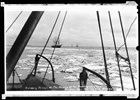
The Yup’ik, Alutiiq, and Dena’ina subsisted off the salmon runs in this area for 9,000 years. Bristol Bay had a high concentration of canneries due to this high volume of salmon. The Arctic Packing Company constructed the first saltery in Bristol Bay at Kahulik in 1883, and the competitive market created a culture than altered the region forever. Native Alaskan populations were exposed to disease, and overfishing threatened subsistence lifestyles of Dena’ina people upstream. Read more
-
Article 8: For Further Study: Canneries in Alaska
Looking for more information about canneries in Alaska? Read more

